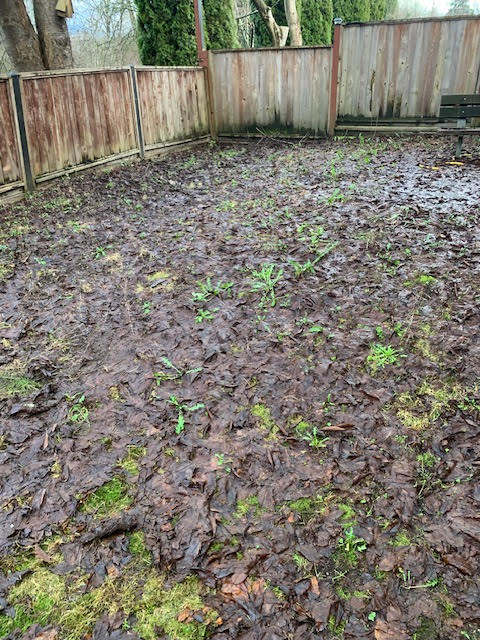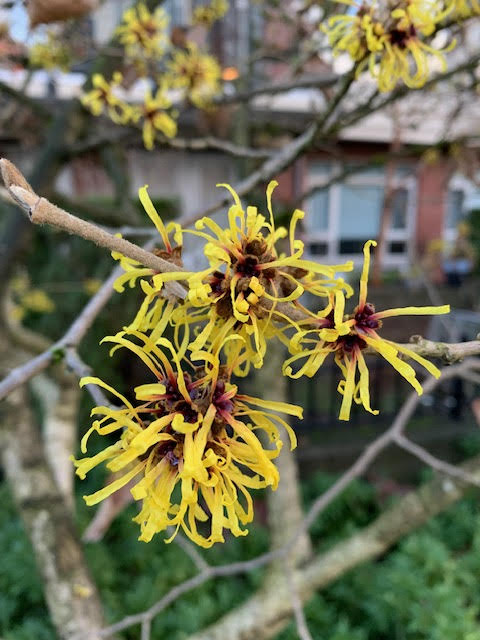A great idea!
Memorial trees are a great idea. When I die, I’d love to get a tree planted somewhere with my name on it. But sometimes the technical aspect can be troubling, which explains my love and hate relationship with memorial trees.
Scott’s tree


I have no idea who Scott was. I discovered this memorial tree while installing twenty yards of soil amender in the same courtyard. It took me four days to complete the project and every time I wheeled my wheelbarrow by Scott’s tree I counted my blessings. I’m older than Scott and I’m celebrating twenty-five seasons in the landscape industry this year.
I have no idea how much time I have left so I’m counting my blessings.
Scott’s tree is technically a shrub. Prunus lusitanica is a Portuguese laurel from the cherry family. Given its location in a sheltered courtyard, I expect Scott’s tree to do fine. Also, laurels are easier to plant and establish than trees; and they’re also cheaper and.
Eventually the laurel will need some pruning but for now it’s working really well. Note that it’s sitting in a large tree circle where lawn machines can’t injure the bark.
Thea’s tree
Now, when my sister and her partner tragically lost their daughter in a car accident they also planted a memorial tree. But this project was stressful.
I believe they picked a hawthorn because they are on a ranch outside Kamloops where it’s cold in winter and very hot in summer. The soils are also poor and there is limited water in summer.
As soon as the tree was planted, the girl’s grandma planted up the heart-shaped tree well with annuals. Personally, I don’t like the idea this early. We need the tree to establish and annuals can deflect rain drops away from the tree; and they also compete with surface roots. Alas, grandma is an avid gardener.
Then we get to watering. Newly installed trees should be flooded but this isn’t practical on a ranch with limited water resources. I also suspect there might be ashes in the planting hole: I didn’t have the balls to ask. When I poked my finger in the tree well to check on moisture levels I got raised eyebrow looks which more or less answered my question.
Last year the tree had to be moved and I believe it’s doing ok at the moment. Still, every time my sister mentions it I feel a bit of stress.
There is tons of pressure on memorial trees to thrive.































